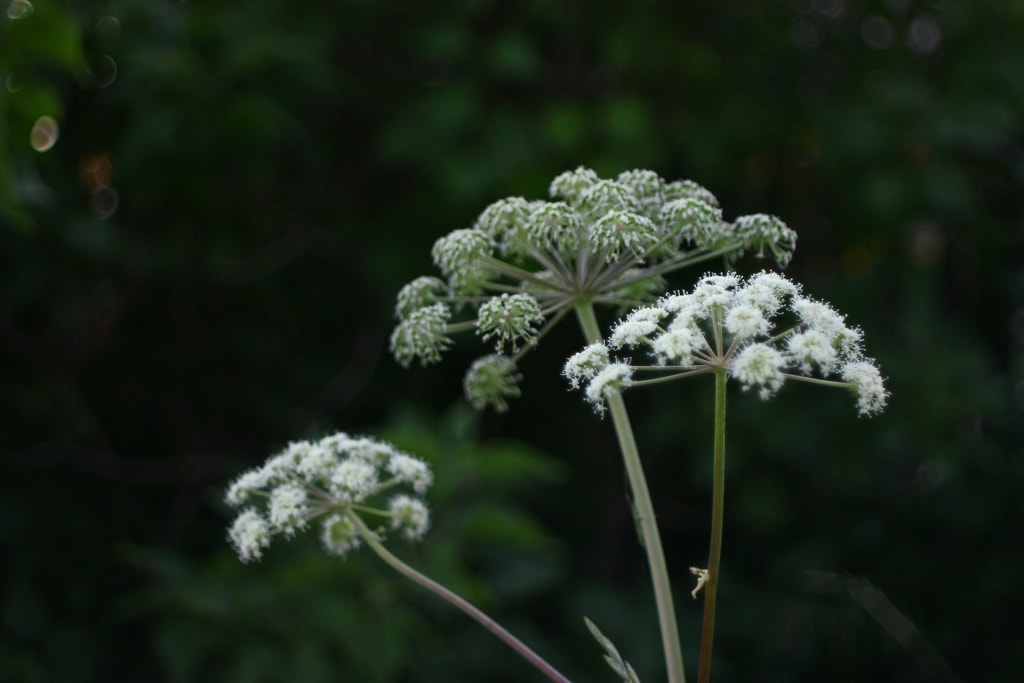If You See This Plant, Avoid Touching It at All Costs
The Most Dangerous Plants You Need to Watch Out For

Plants are a vital component of our ecosystem, providing clean air and beauty to our surroundings. However, some plants are dangerous and can cause harm to humans. Here are some of the most dangerous plants that you should be aware of.
1. Giant Hogweed
The giant hogweed is a group of toxic lookalike plants that are known as Britain's most dangerous plant. Surprisingly, this plant is a member of the carrot family. It was originally hanging out in the Caucasus, and people really liked it for its impressive height of over 16 ft and pleasant appearance. They started planting it in gardens, and then suddenly, it turned out that the plant was highly toxic. By the 80s, it was officially banned from gardens in England.
Giant hogweed is a plant that grows near rivers and canals, and is now seen in gardens and parks too. It is quite common all over the UK. Due to people spending more time in their gardens lately, this plant has received more attention. It looks like cow parsley or Hemlock, but is taller and more dangerous. It has long stems with white leaves and a wide stem that has a big white umbrella-shaped flower on top. To identify it, look at its sharp, divided leaves that are around 6 inches wide. The stems are thick and bristly with stiff white hairs and hollow ridges. There may be purple blotches on the stems like Hemlock, but this plant grows much taller and has fewer fern leaves. The flower heads can stretch up to 2 feet.
Be careful around a certain plant whose sap can cause serious harm. The sap contains a chemical called ferin, which makes your skin extra sensitive to sunlight. It can also cause a condition called sensitization, where your skin reacts badly to sunlight even years later. If you get the sap on you and go outside, you can end up with severe burns that blister and take a long time to heal. These burns can leave scars that last a lifetime. The sap can also harm your eyes and potentially blind you if it gets in them. Be especially cautious during summer when the plant is most active. Be aware that the sap can harm you even if you're wearing clothing or shoes, so stay away from any suspicious-looking plants. Symptoms of sap exposure include a rash, itching, and painful blisters. If you believe you've been exposed, quickly wash the affected area with soap and water and seek medical attention, especially if you see blisters.
2. Foxglove
There are other very toxic plants that could be hiding in your garden or local area looking harmless and pretty. Don't be tricked by Foxglove's beauty. This plant contains digitoxin, which is used in medicine to stimulate the heart. All parts of the Foxglove plant are toxic. If you eat the leaves, you could end up with a stomach ache, nausea, vomiting, or worse. In serious cases, it can even mess up your vision and cause problems with your heart and kidneys.
3. Nightshade
Nightshade is another one of the most poisonous plants. Don't eat it. Just a couple of its berries contain tropane alkaloids, which can be fatal to a person. This plant is a member of the tomato family, and it can be found in woodlands, although it's not as common as it used to be. Its family is quite extensive, including tomatoes, potatoes, chilies, alans, peppers, and henbane. Despite its scary nature, we can extract an antidote for nerve gas from this plant. So while it's dangerous, it also holds a unique quality with potential medicinal uses.
4. Hemlock Water Dropwort
Finally, there's the Hemlock Water Dropwort, also known as poison parsnip. It's a very common plant around rivers and lakes. As you can guess from the name, it's related to Hemlock, another toxic plant. Hemlock is a very dangerous plant on its own. It can be fatal if eaten, and it contains five different alkaloids that can lead to severe paralysis of the nervous system. What's even worse is that it's often found in the wild around pretty populated areas. These two plants, however, live in different places and have different toxins.
Every part of the Hemlock Water Dropwort, including its tubers, stems, and leaves, contains a powerful poison called enanth toxin. This poison targets the central nervous system and can cause serious convulsions. So both of these plants are not to be messed with.
Some of the most dangerous plants in the world include Aconite, Manion tree and Castor bean. These plants are highly toxic, and can cause serious harm or even death. Castor bean seeds contain ricin, which is said to be 6,000 times more poisonous than cyanide.
About the Creator
Enjoyed the story? Support the Creator.
Subscribe for free to receive all their stories in your feed. You could also pledge your support or give them a one-off tip, letting them know you appreciate their work.





Comments (1)
Test is not accepting comments at the moment
Want to show your support? Send them a one-off tip.